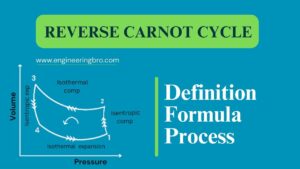What is a steering gearbox?
The steering gearbox is a mechanical component used in the steering system of vehicles to convert the rotational motion of the steering wheel into the lateral motion required to turn the vehicle’s wheels.
Table of Contents
Purpose of Steering gearbox?
The purpose of the steering gearbox is to provide a mechanical advantage and assist the driver in turning the wheels.
It is commonly found in older or heavier vehicles, such as trucks and SUVs, although some modern vehicles may still utilize a similar design.
Where can you find the Steering gearbox in the vehicle?
The steering gearbox is typically mounted on the vehicle’s frame or chassis and is connected to the steering wheel through a series of linkages and shafts.
When the driver turns the steering wheel, it causes the input shaft of the gearbox to rotate. Inside the gearbox, a system of gears and mechanisms converts the rotational motion into lateral movement.
Working of steering gear box?
The output of the gearbox is then connected to the steering linkage, which transmits the lateral motion of the wheels, causing them to turn in the desired direction.
The gearbox also allows for the adjustment of the steering ratio, which determines the number of turns of the steering wheel required to turn the wheels a certain amount.
Types of Steering gear box?
Steering gearboxes can vary in design and configuration, with different types including recirculating ball and sector, worm and roller, or rack and pinion.
Each type has its own advantages and characteristics in terms of performance, durability, and steering feel.
1. Recirculating Ball and Sector steering gear box:
Advantages:
This type of steering gearbox is known for its durability and ability to handle heavy loads.
It provides a high mechanical advantage, making it suitable for larger vehicles such as
trucks and SUVs. It can also handle rough terrain and off-road conditions well.
Characteristics:
Recirculating ball and sector gearboxes use a worm gear and ball bearings to convert the
rotational motion of the steering wheel into lateral motion.
They typically have a slower steering ratio, requiring more turns of the steering wheel to turn the wheels a certain amount. This can provide a greater sense of stability and control at higher speeds.
2. Worm and Roller steering gear box:
Advantages:
Worm and roller gearboxes offer good durability and are relatively simple in design.
They are commonly found in older vehicles and can handle moderate loads.They are generally more affordable compared to other types of gearboxes.
Characteristics:
In this type of gearbox, a worm gear meshes with a roller to transfer the rotational
the motion of the steering wheel into lateral motion.
They tend to have a larger steering ratio, meaning fewer turns of the steering wheel are required to turn the wheels. This can result in a quicker and more responsive steering feel.
3. Rack and Pinion steering gear box:
Advantages:
Rack and pinion gearboxes are widely used in modern vehicles due to their compact size, lighter weight, and improved steering response.
They offer precise control and good road feedback to the driver.
They are also more efficient, resulting in better fuel economy.
Characteristics:
This type of gearbox consists of a gear rack and a pinion gear.
The rotational motion of the steering wheel is directly translated into lateral motion by the meshing of these gears.
Rack and pinion gearboxes typically have a quicker steering ratio, allowing for more agile and responsive steering.
They are commonly found in smaller and mid-sized cars know: Why a power steering system is better than a steering gearbox system(manual steering system)
Conclusion to steering gear box:
It’s worth noting that with advancements in automotive technology, many modern vehicles have transitioned to electric power steering systems, which use electric motors and sensors instead of mechanical gearboxes.
These systems provide improved fuel efficiency and allow for advanced driver-assistance features. However, traditional steering gearboxes are still found in certain vehicles, particularly those designed for heavy-duty applications.
ALSO READ
WHAT IS VACUUM BRAKING SYSTEM, WORKING, PROS,CONS AND APPLICATIONS








